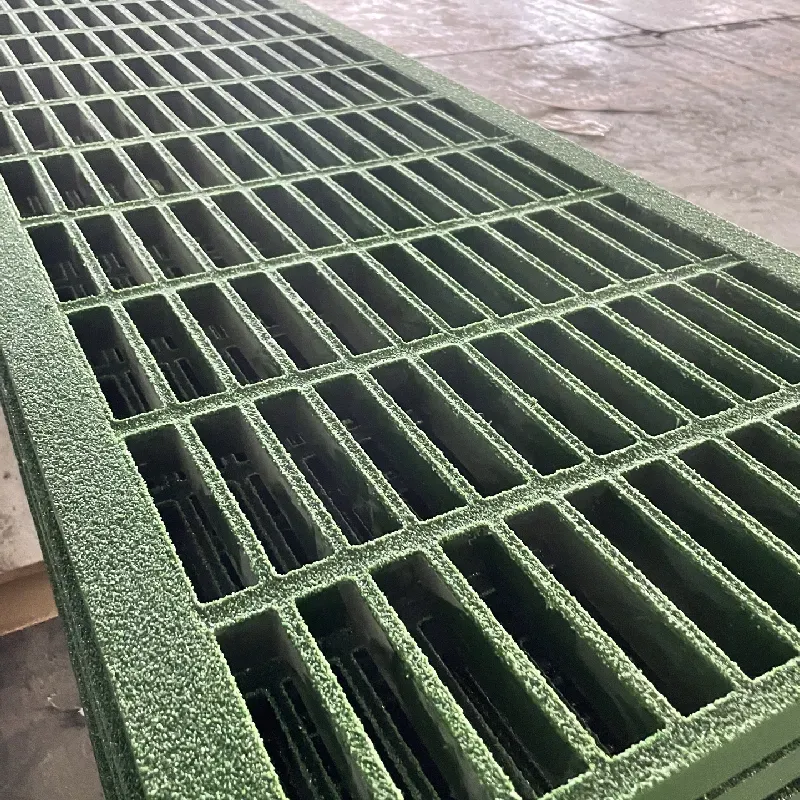loading...
- No. 9, Xingyuan South Street, Dongwaihuan Road, Zaoqiang County, Hengshui, Hebei, China
- admin@zjcomposites.com
- +86 15097380338
- Welcome to visit our website!
Innovative Solutions for Durable and Sustainable FRP Decking Systems
Understanding FRP Decking The Future of Durable Construction
In the construction industry, materials play a pivotal role in ensuring the longevity and durability of structures. One material that has gained considerable attention in recent years is Fiber Reinforced Polymer (FRP) decking. This innovative solution brings numerous advantages over traditional materials, making it a popular choice in various applications, from commercial buildings to bridges and marinas.
What is FRP Decking?
FRP decking is a composite material made from a polymer matrix reinforced with fibers—typically glass, carbon, or aramid. This unique combination provides a lightweight yet exceptionally strong product that is resistant to corrosion and environmental degradation. The manufacturing process of FRP involves combining resin and reinforcing fibers in specific ratios to achieve desired properties such as strength, stiffness, and flexibility.
Key Benefits of FRP Decking
1. Corrosion Resistance One of the standout features of FRP decking is its resistance to corrosion. Unlike traditional materials such as wood or steel, which can degrade over time due to exposure to moisture and chemicals, FRP does not rust or rot. This property makes it ideal for use in harsh environments, including chemical plants, marine settings, and areas prone to moisture.
2. Lightweight and Easy to Install FRP decking is much lighter than concrete or steel alternatives. This characteristic allows for easier handling and installation, reducing labor costs and time on-site. It also minimizes structural load requirements, which can be a significant advantage when considering the overall design of a building or structure.
3. Durability and Long Lifespan FRP materials are known for their longevity. With minimal maintenance, FRP decking can last decades, making it a cost-effective choice over time. Its ability to withstand extreme weather conditions—from intense heat to freezing temperatures—further enhances its appeal.
frp decking

4. Versatility FRP decking can be molded into various shapes, sizes, and colors, providing architects and engineers with greater design flexibility. Whether it's a public walkway, a rooftop deck, or a bridge deck, FRP can be tailored to fit specific aesthetic and functional requirements.
5. Environmental Impact The production and installation of FRP decking can also have a lower environmental impact. Made from recyclable materials, FRP contributes to sustainable construction practices. Furthermore, its longevity means that fewer resources need to be expended on repairs or replacements over time.
Applications of FRP Decking
The applications of FRP decking are diverse. In the marine industry, it's often used for docks and walkways, where its lightweight and water-resistant properties are particularly advantageous. In the construction of commercial buildings, FRP decking can be employed for balconies, pathways, and even parking structures. Additionally, FRP is increasingly being adopted in infrastructure projects, such as bridges, where its strength-to-weight ratio allows for innovative designs and engineering solutions.
Challenges and Considerations
While FRP decking presents numerous advantages, there are also challenges to consider. The initial cost of FRP products can be higher than traditional materials, although it’s essential to factor in the long-term savings due to reduced maintenance needs. Furthermore, the specialized knowledge required for installation and design means that not all construction teams may be familiar with FRP, highlighting the need for training and expertise.
Conclusion
FRP decking represents a significant advancement in construction materials, offering a combination of strength, durability, and versatility that is hard to match. As the demand for sustainable and resilient building solutions continues to rise, it's likely that FRP will play an increasingly important role in shaping the future of construction. For builders, engineers, and architects, understanding and utilizing FRP decking can open new avenues for creative and efficient project development, ultimately leading to structures that stand the test of time.
-
The Rise of FRP Profiles: Strong, Lightweight, and Built to LastNewsJul.14,2025
-
SMC Panel Tanks: A Modern Water Storage Solution for All EnvironmentsNewsJul.14,2025
-
GRP Grating: A Modern Solution for Safe and Durable Access SystemsNewsJul.14,2025
-
Galvanized Steel Water Tanks: Durable, Reliable, and Ready for UseNewsJul.14,2025
-
FRP Mini Mesh Grating: The Safer, Smarter Flooring SolutionNewsJul.14,2025
-
Exploring FRP Vessels: Durable Solutions for Modern Fluid HandlingNewsJul.14,2025
-
GRP Structures: The Future of Lightweight, High-Performance EngineeringNewsJun.20,2025
